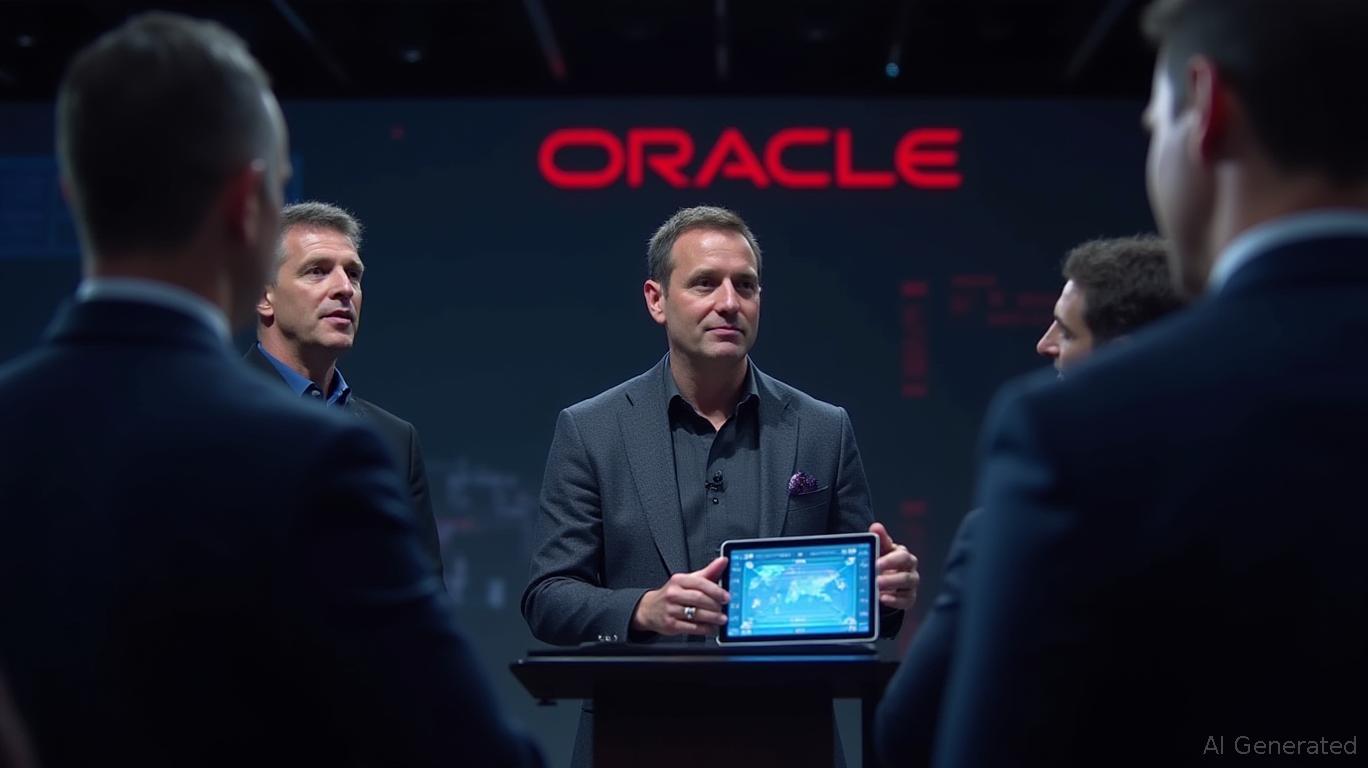Oracle’s AI Framework Secured by Cryptography Sets New Benchmarks for the Industry
- Oracle secures fourth AI hyperscaler status via cryptographic contracts and partnerships with OpenAI, Vantage, and NVIDIA. - 4.5 GW Stargate infrastructure and 2,200 exaflop supercomputers aim to democratize AI access for scientific research. - Financial projections show 17% annual growth, contrasting with speculative risks faced by Amazon and Microsoft's AI expansions. - Standardized APIs and certified cloud solutions position Oracle as a leader in enterprise AI adoption amid global economic uncertainti
The technology industry is undergoing a major transformation as
Oracle’s latest partnership with OpenAI and Vantage Data Centers to establish a 4.5 GW Stargate AI facility in Wisconsin demonstrates its dedication to secure and scalable infrastructure.

This collaboration also includes groundbreaking work with
From a financial perspective, Oracle’s AI strategy is supported by strong growth figures. The company posted a 12% year-over-year revenue rise in Q1 2026, and is projected to achieve a 17% annual growth rate for fiscal 2026, according to the Yahoo Finance forecast. Bank of America’s updated projections estimate an initial 9% return on Oracle’s AI compute investments, increasing to 16% after contract renewals, thanks to Oracle’s cost-effective debt financing, as noted by Bank of America. In contrast, CyberArk Software (NASDAQ: CYBR) has seen firms like Nepsis sell off $14 million in shares, reflecting caution toward speculative tech investments.
Some skeptics believe Oracle’s future depends on ongoing demand for its AI infrastructure, especially given global economic instability. Nevertheless, Oracle’s emphasis on cryptographic contract protection and standardized cloud offerings—such as its Fusion Cloud Applications, which have been adopted by states like Missouri—strengthens its leadership in enterprise AI, as outlined in a
As the AI infrastructure sector advances, Oracle’s combination of cryptographic security, strategic partnerships, and scalable cloud technologies could set new industry benchmarks, providing a model for trustworthy AI oracle systems, as emphasized by Bank of America.
Disclaimer: The content of this article solely reflects the author's opinion and does not represent the platform in any capacity. This article is not intended to serve as a reference for making investment decisions.
You may also like
Zcash (ZEC) To Dip Further? Key Breakdown Signals Potential Downside Move

Pepe (PEPE) Testing Crucial Support Post-Breakdown — Can a Retest Move Halt the Downtrend?

Bitcoin Updates Today: Bitcoin Declines While Altcoins Show Strength: Different Trends Suggest Market Recovery
- Bitcoin's prolonged slump below $90,000 contrasts with altcoin resilience as ETF outflows and fading Fed rate-cut hopes drive market correction. - On-chain data shows retail capitulation and subdued whale activity, historically signaling potential rebounds amid oversold technical indicators. - Institutional adoption and tokenized assets sustain long-term crypto optimism despite short-term volatility and unrealized losses in digital treasuries. - Diverging investor behavior highlights altcoin utility-driv

KITE's Price Movement After Listing and Institutional Perspectives: Managing Immediate Fluctuations and Sustained Worth in AI-Powered Real Estate
- KITE's post-IPO volatility reflects retail sector fragility and AI-driven industrial real estate opportunities amid macroeconomic headwinds. - Q3 2025 earnings missed forecasts (-$0.07 EPS, $205M revenue) as rate cuts and OBBBA fiscal impacts amplified REIT sensitivity to market shocks. - Strategic divestments of noncore retail assets and 7.4% dividend growth signal portfolio optimization, though opaque institutional ownership complicates sentiment analysis. - Industrial real estate's AI-powered logistic